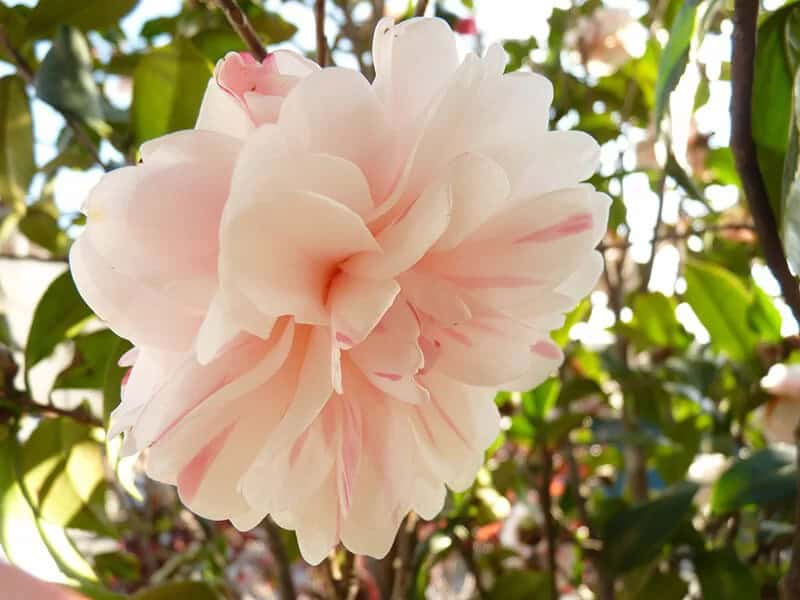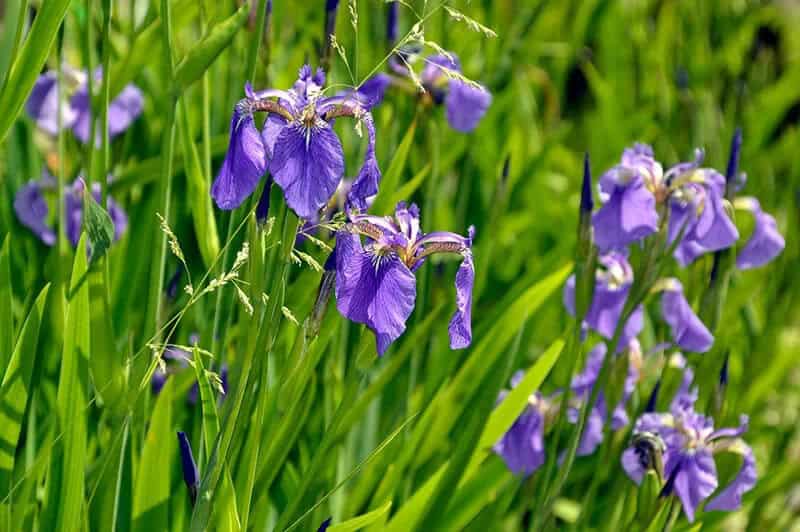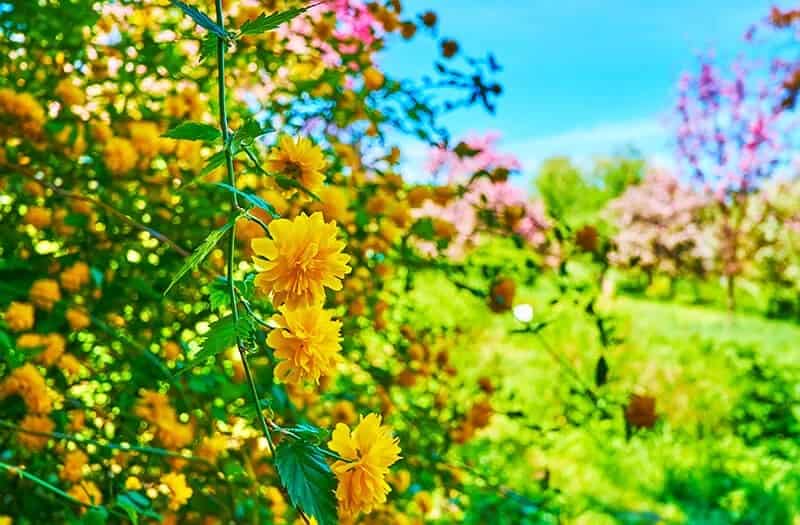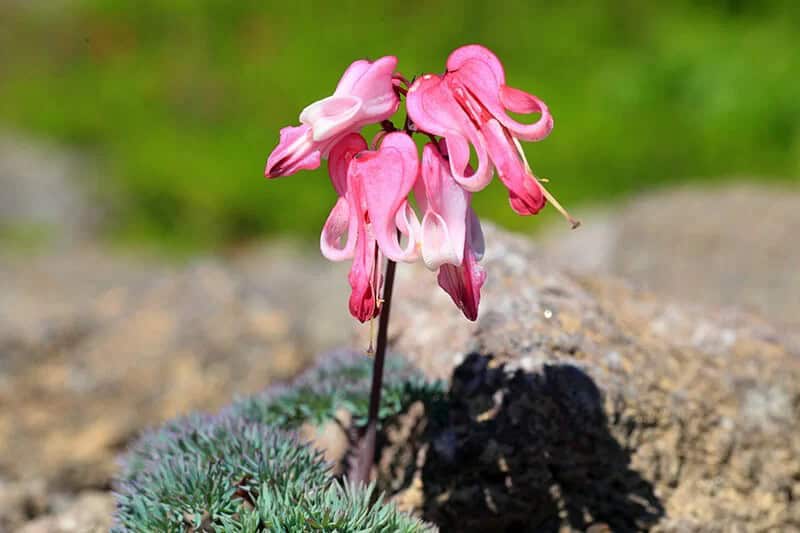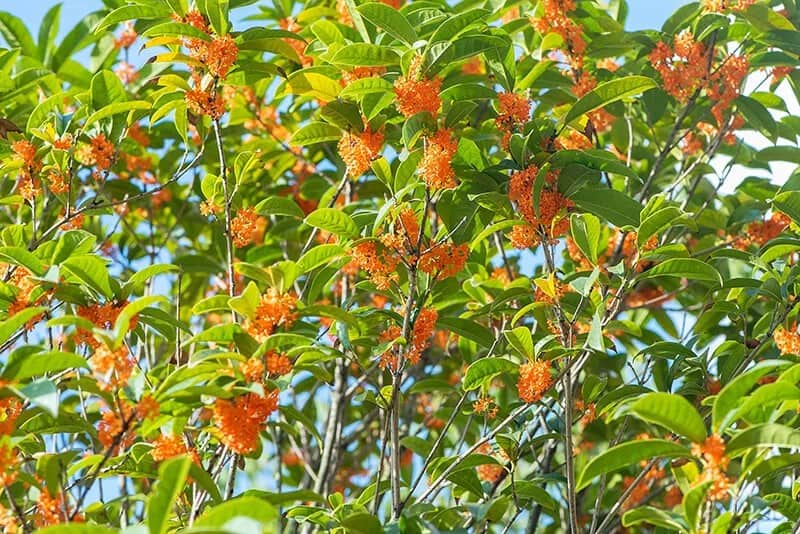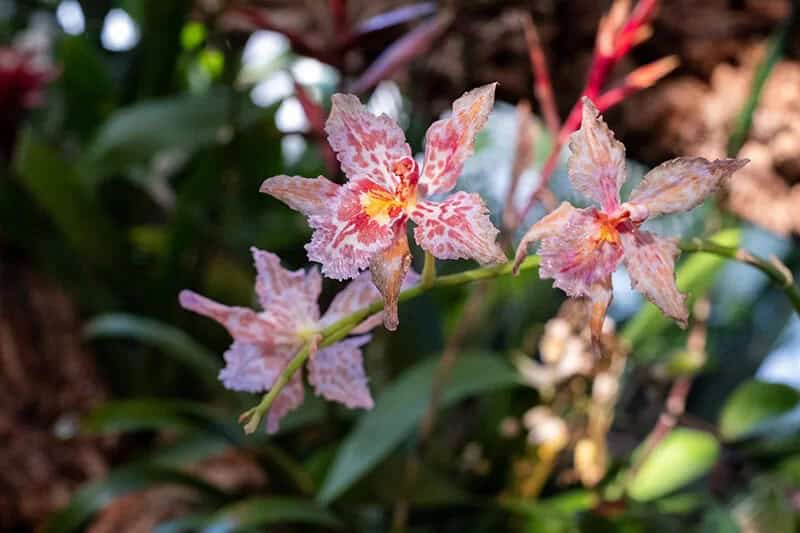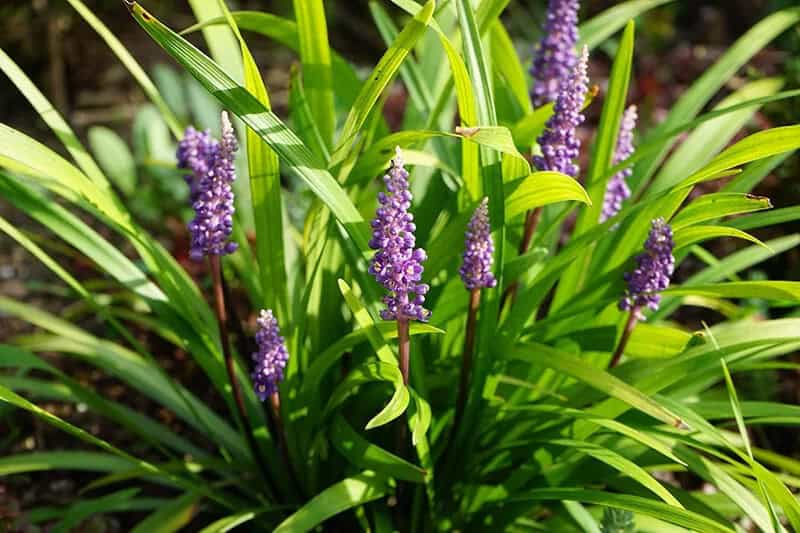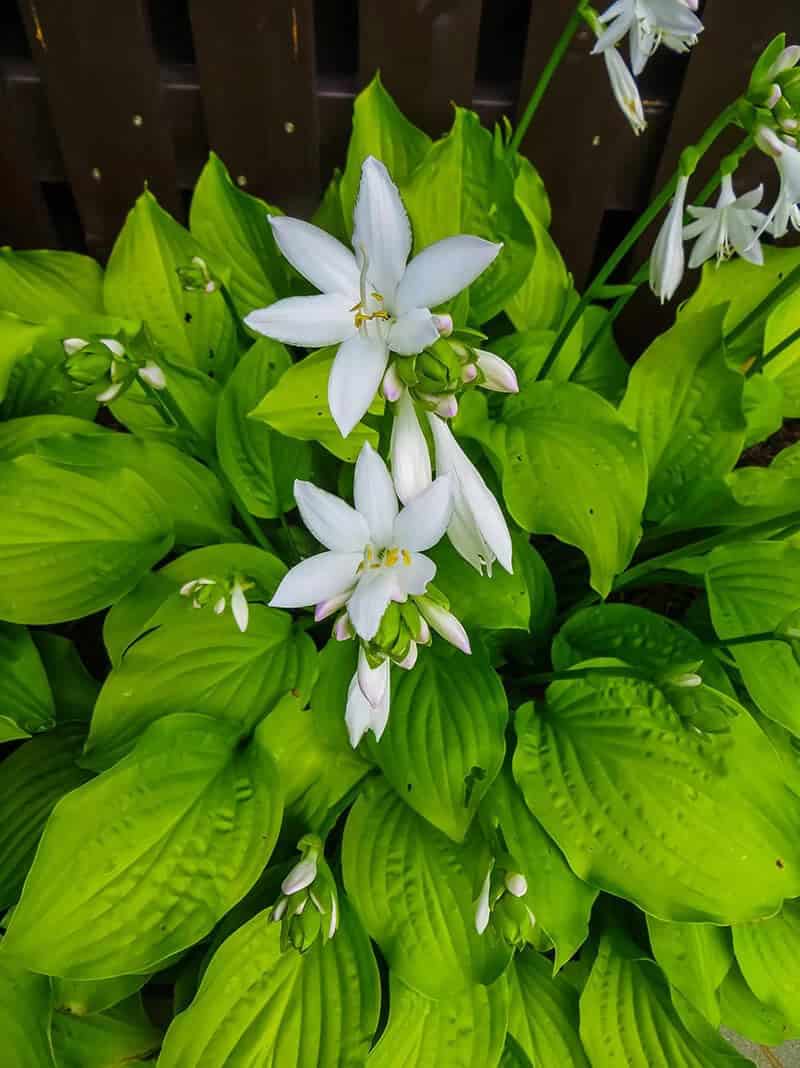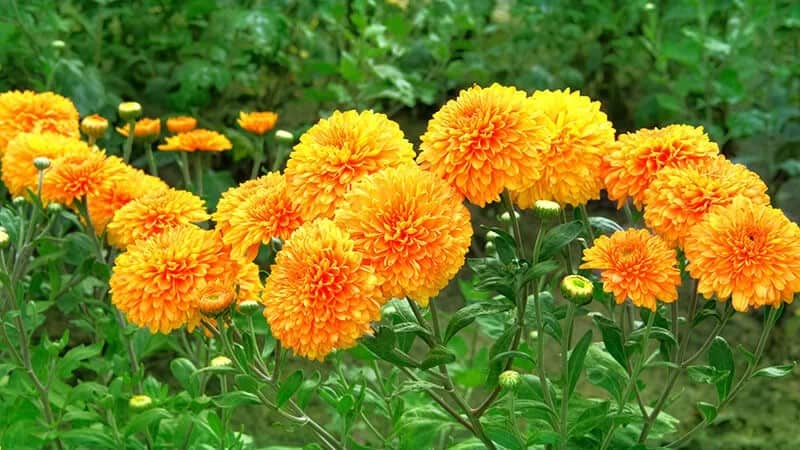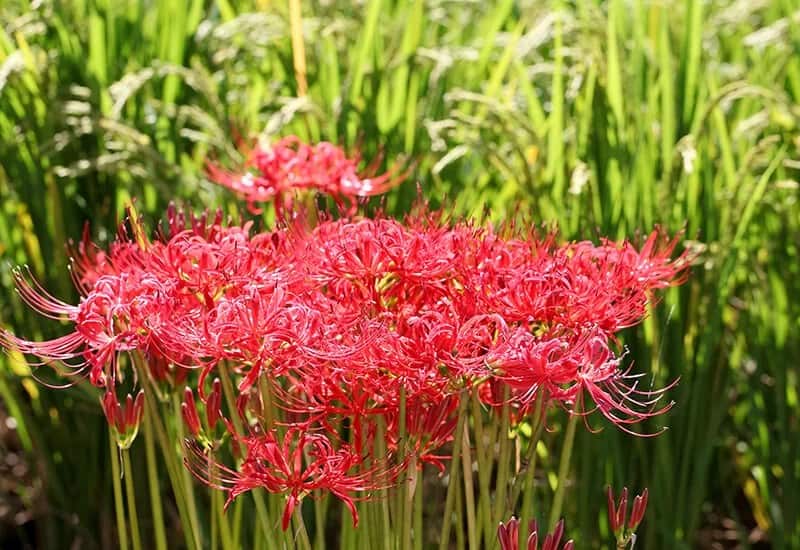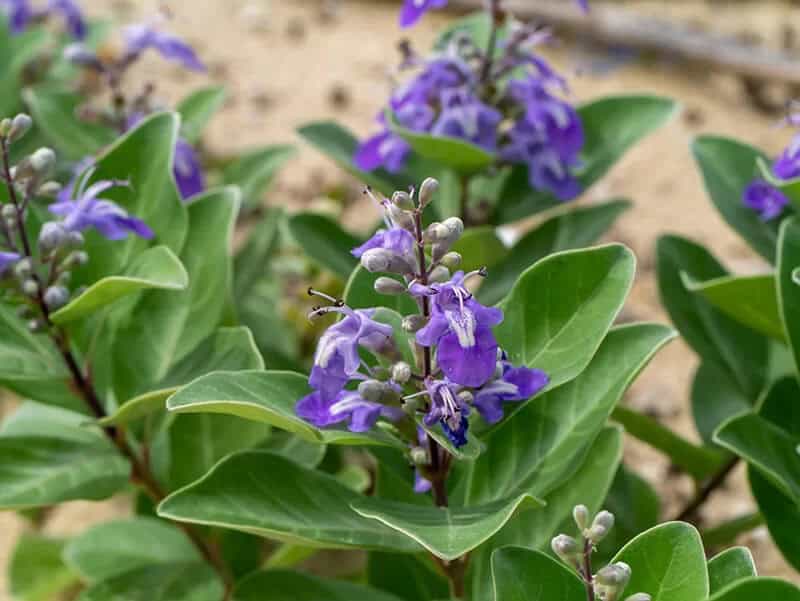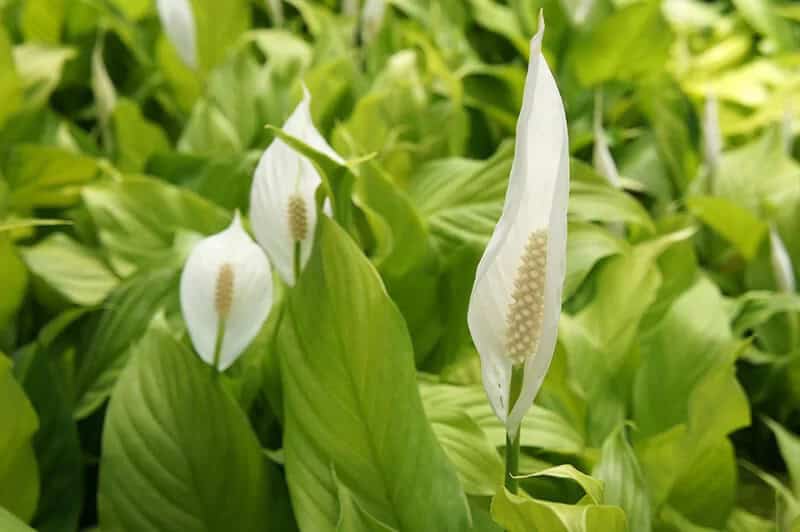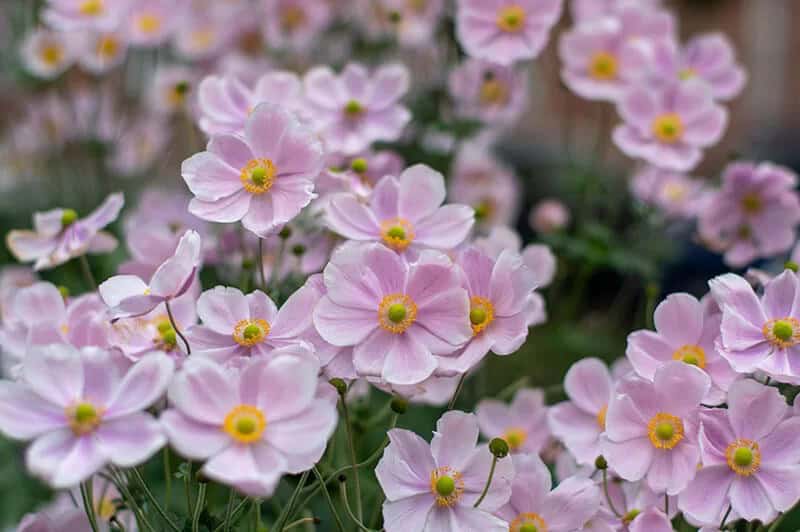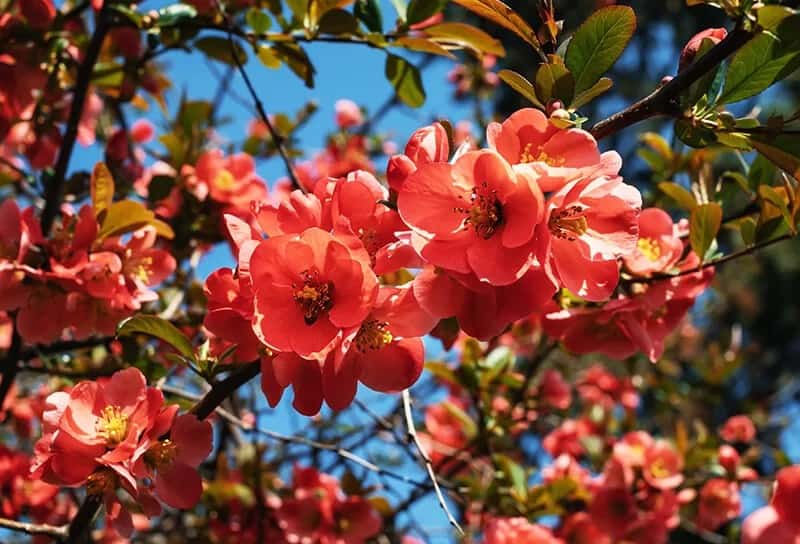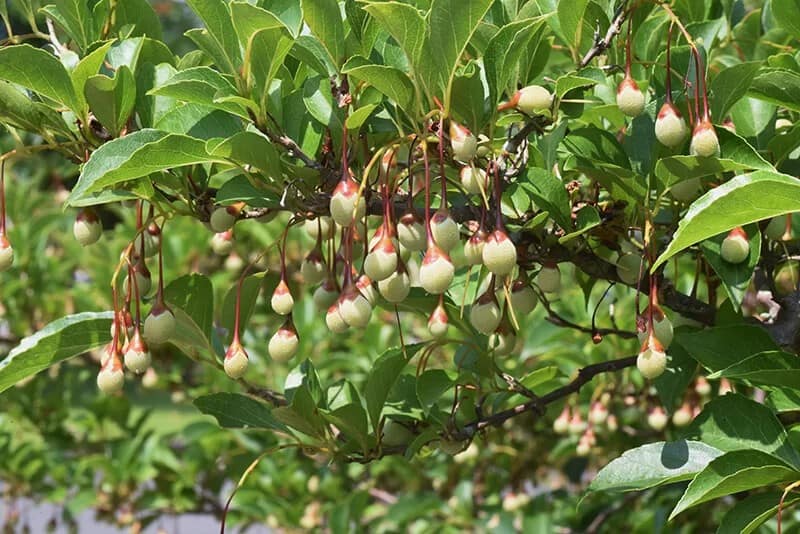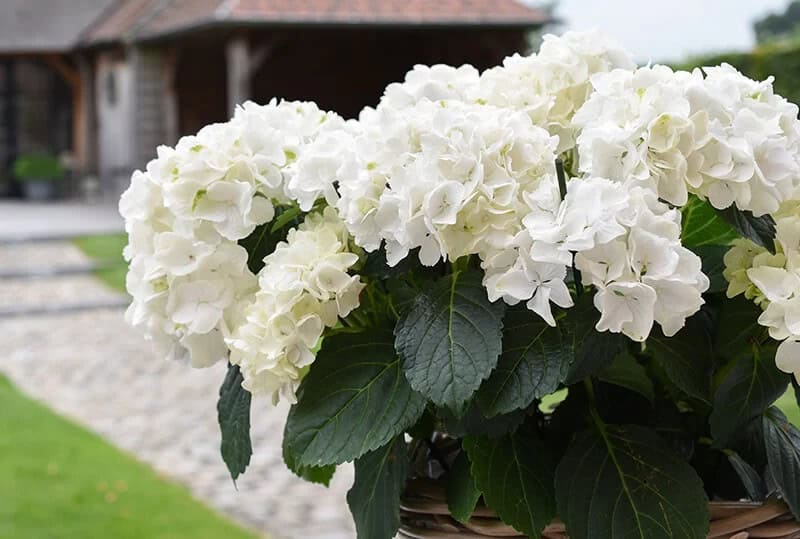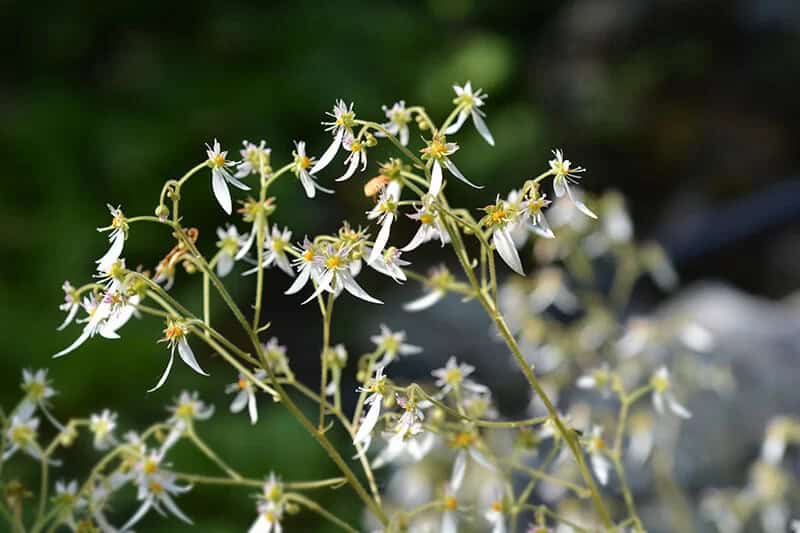Transform your space into a serene oasis by incorporating the best Japanese flowers. A thoughtfully designed Japanese-inspired garden can be a powerful stress-reliever, providing a tranquil retreat for the weary soul. By embracing the principles of wabi-sabi and balance, you’ll unlock the perfect ambiance. To achieve harmony, temper bold colors with soft, delicate hues to create a sense of calm and serenity.
The Top 27 Japanese Flowers to Plant in Your Garden for Balance and Beauty
Embracing the imperfections of nature, we can find serenity by contrasting delicate, understated blooms with more elaborate, sculptural varieties. Wabi-sabi, a Japanese aesthetic, celebrates the beauty in the unconventional and imperfect. The types of Japanese flowers that cultivate tranquility depend on your personal botanical sensibilities and the unique characteristics of your space.
Camellia (Camellia Japonica ‘April Dawn’)
Originally sourced from Japan and East Asia, the ‘April Dawn’ camellia variety boasts an impressive range of colors and flower shapes, showcasing artistic elegance. Notably, this specific type features subtle pink streaks on a crisp white background. What sets it apart is its exceptional winter hardiness, making it an excellent option for those residing in colder climates.
The plant’s symbolism is deeply rooted in steadfast love, good luck, and aristocracy, while its growing requirements include medium watering needs, acidic and well-drained soil, and part shade to full sun exposure, thriving in zones 6 to 9 with blooming occurring during April.
Sword-Leaved Iris (Iris Ensata)
The majestic sword-leaved iris is often associated with strength and victory, symbolizing triumph in many cultures. This beautiful flower thrives in environments that mirror its symbolic connotations – it requires medium to wet soil conditions, which can be achieved by planting it in boggy areas or near water features. In terms of growing zones, the sword-leaved iris prefers zones 4 to 9, making it a versatile option for many gardeners.
While it tolerates poor draining soil and standing water, it also appreciates acidic soil conditions. When it comes to light, this stunning flower requires full sun to partial shade. Blooming season-wise, expect vibrant displays of color from June to July. With its sword-shaped leaves and variety of colors, including warm purples with yellow accents, the sword-leaved iris is an ideal addition to any Japanese garden.
Incorporate a few plants near your water feature or pond to bring a touch of serenity to your outdoor space.
Yamabuki Japanese Rose (Kerria Japonica ‘Pleniflora’)
The Japanese rose, also known as Yamabuki in Japan, is a stunning example of elegance and hardiness. Its fluffy 2-inch blooms resemble pom-poms, adding a touch of springtime magic to any landscape. Not only do the flowers bring joy, but the leaves turning yellow in fall provide a beautiful contrast to the green stems that remain throughout winter, offering year-round interest for your garden.
Characteristics:
• Symbolism: Second chances
• Water needs: Medium (avoid clay soils)
• Growing zones: 4 to 9
• Light needs: Part shade
• Blooming season: April to May
Lily of the Valley Bush (Pieris Japonica ‘Shojo’)
The return of happiness is symbolized by these bell-shaped blossoms that transform from dark red flower buds in early spring to luxurious pink blooms when fully emerged. As an evergreen, the lily of the valley bush adds a pop of color to your garden throughout the seasons, regardless of the time of year. This perennial requires rich, mildly acidic soil with good drainage, and can thrive in zones 5-8. With full sun to partial shade, it’s a delightful addition to any garden.
The blooming season typically begins in April, making it a lovely sight to behold.
Komakusa Bleeding Heart (Dicentra Peregrina)
Komakusa, a Japanese variety of bleeding hearts, boasts the iconic heart-shaped blooms with an intriguing twist – its flowers are designed to resemble a stylized horse’s head. This unique feature adds a touch of whimsical romance to any garden. Characterized by medium water needs and average, well-draining soil, Komakusa thrives in zones 3 to 7. It flourishes under full sun to partial shade, with its blooming season spanning from April to June.
Shirouma Asatsuki Chives (Allium Schoenoprasum)
Despite its origins being far from Japan, the delightful Shirouma Asatsuki flower can be found thriving in the Japanese Alps. Characterized by its spherical blooms and lovely lavender hue, this ornamental accent adds a touch of whimsy to any garden or arrangement.
With its medium water needs, porous soil that drains well, and ability to grow in zones 4 to 8 under full sun to part shade conditions, Shirouma Asatsuki is an attractive addition to any spring display, especially during the blooming season from April to May.
Sacred Lotus (Nelumbo Nucifera ‘Pekinensis Rubra’)
The lotus flower is a symbol of wisdom, truth, and time, making it a stunning addition to any water feature. Its aquatic nature means it thrives in submerged, rich soil, and can be grown in USDA zones 4 to 10. The plant requires full sun to bloom from July to September, producing delicate pink-tipped flowers that eventually give way to papery brown seed pods. This variety is particularly striking, with its elegant blooms evoking a sense of balance and beauty.
Whether you’re looking to create your own floral arrangements or simply appreciate the aesthetic appeal, this Japanese flower is sure to delight.
Kinmokusei Fragrant Tea Olive (Osmanthus Fragrans f. Aurantiacus ‘Orange Supreme’)
Japanese apricot flowers, also known as Prunus mume, are renowned for their intoxicating apricot fragrance. While images may not do them justice, these aromatic blooms can transport you to a sensory experience when incorporated into your garden design. Not only do they offer an incredible scent, but they’re also versatile and adaptable, allowing you to shape them through pruning techniques to create a showy espalier, tidy shrub, or small tree.
To thrive, Japanese apricot flowers require medium watering, are drought-tolerant, and prefer consistently moist soil that drains well, tolerating clay-type soils. They can be grown in zones 8 to 11 and appreciate full sun to part shade. The blooming season typically occurs in April, making them a beautiful addition to any garden.
Toad Lily (Tricyrtis Hirta ‘Miyazaki’)
Toad lilies, also known as Japanese flowers, are a great option for adding vibrant colors to shaded areas of your garden. The dramatic spots and unique origami-like design make them a standout choice. With medium to wet watering needs and average, well-draining soil requirements, they’re easy to care for. Growing zones 4-8 accommodate most climates, while part shade to full shade light conditions ensure they thrive. Bloom season is August to September, providing a delightful display of color.
For a harmonious balance in your garden, pair the showy toad lilies with plants that offer understated elegance.
Yabu Ran Lily Turf (Liriope Muscari ‘Okina’)
The symbolic playfulness of this plant is undeniable, as it brings a whimsical touch to any landscape. In terms of its practical needs, it requires medium watering and can tolerate some drought. The soil should be well-draining and average in quality, although it can adapt to a wide range of soil types. This flowering perennial thrives in growing zones 5 through 10, where it will receive full sun to partial shade.
One of the most striking features of this plant is its unique blooming season, which typically takes place from August to September. The sudden appearance of white foliage at the start of the season gradually gives way to bright green as the months pass. When combined with other plants that provide contrast, these floppy flowers can add a romantic touch to your outdoor space.
Tama Kanzashi Hosta (Hosta Plantaginea var. Japonica)
The Hosta ‘Tama Kanzashi’ boasts an array of appealing characteristics that make it a sought-after addition to any garden. Its medium watering needs are easily met with regular irrigation, while its average soil requirements mean it can thrive in a wide range of conditions. With a growing zone range of 3 to 9, this variety is adaptable to various climates.
The plant’s ability to tolerate part shade to full shade light conditions makes it an excellent choice for areas that don’t receive direct sunlight. In late August and September, the ‘Tama Kanzashi’ produces stunning white blooms, each enclosed within a five-foot-tall spathe, reminiscent of Japanese ‘jewel of the hairpiece’ traditions. The best part? This low-maintenance beauty is perfect for novice gardeners, requiring minimal upkeep to flourish.
Nadeshiko Carnation (Dianthus Superbus)
Among the lush greenery of your garden, the Nadeshiko Carnation stands out with its extravagant frilled flowers and delicate pink hue. Reaching 12 inches tall, this showstopper blooms from June to July, filling any space with a sense of drama. To create a striking visual display, position them at the front of taller plants with simple foliage, allowing their lacy petals to take center stage.
Alternatively, they can thrive in rock gardens, where their vibrant colors will pop against the natural textures.
Hotaru Bukuro Spotted Bellflower (Campanula Punctata ‘Cherry Bells’)
Chrysanthemum (Chrysanthemum)
Chrysanthemums, a type of flowering plant, have long been revered for their vibrant colors, intricate flower shapes, and impressive ability to bloom for months on end. But what’s perhaps most fascinating about these plants is the symbolism attached to them – particularly in regards to rejuvenation and immortality.
In addition to their stunning appearance, chrysanthemums are also associated with these profound themes, making them a truly unique and captivating addition to any garden or arrangement.
These plants require medium levels of water, fertile soil that drains well, and full sun to thrive. They’re hardy enough to grow in zones 4 to 8, meaning they can be enjoyed by gardeners across a wide range of climates. And the best part?
Chrysanthemums bloom from September until the first frost, providing a long season of beauty and color.
Whether planted individually or in groups, chrysanthemums are sure to make a statement with their bright colors and delicate petals. As a symbol of rejuvenation and immortality, they’re also a thoughtful choice for those looking to honor these themes in their garden or arrangement.
Spider Lily (Lycoris Radiata)
In Japanese culture, spider lilies are revered for their breathtaking beauty and symbolic significance in the afterlife. These flowering bulbs thrive in temperate climates with medium water needs and organically rich, well-draining soil. They can be grown in zones 6 to 10 and require full sun to partial shade. The blooming season typically falls between August and September, making them a stunning addition to autumn gardens.
Their unique appeal lies in their ability to form vibrant, crimson-colored blankets across the landscape, often used as a striking border or massed for a dramatic carpet effect. As bulb-based plants, you have complete control over where they bloom, allowing for creative expression and unique garden designs.
Japanese Flowering Cherry (Prunus ‘Kanzan’)
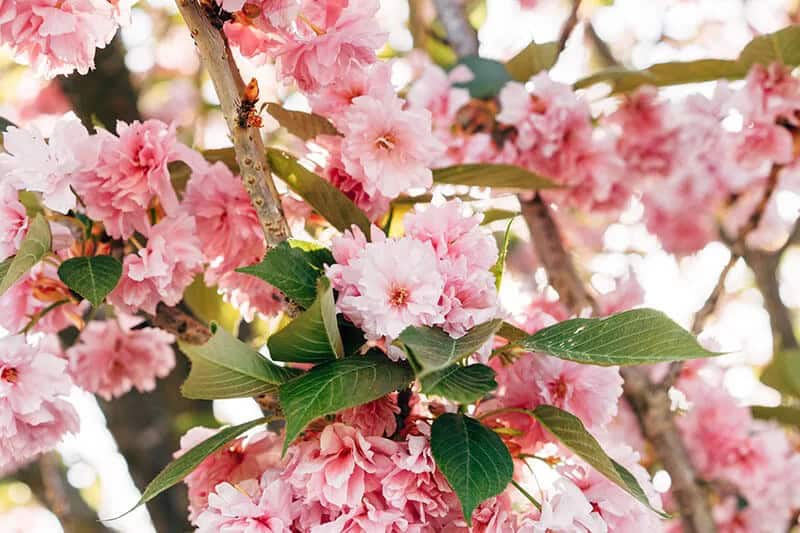
Japanese Cherry Blossoms – A Delicate BeautyThe fleeting beauty of Japanese cherry blossoms is often captured in photographs, but to truly experience it, one needs a suitable environment. The symbolism of these flowers is deeply rooted in the fragility of life, making them a poignant reminder of the ephemeral nature of existence. To cultivate this variety of flowering cherry, you’ll need medium watering, fertile and well-draining soil, and a location with full sun to partial shade.
Growing zones 5-9 are suitable for this ornamental tree, which blooms in April, offering a vibrant display of double-petaled flowers in a rich pink hue.
Murasaki Shikibu Japanese Beautyberry (Callicarpa Japonica)
Roundleaf Chastetree (Vitex Rotundifolia)
The Coastal Vine, with its innocent symbolism and vibrant purple flowers, is a stunning addition to any Japanese-inspired garden. This species thrives in zones 7-10, where it requires full sun, medium water needs, and loose, sandy soil that drains well – making it surprisingly tolerant of poor soils. When planted near a pond or other body of water, the vine’s trailing habit allows it to beautifully adorn bare sandy patches.
While it can become invasive in certain environments, with proper care, this charming plant can bring a touch of beachy charm to your outdoor space.
Mizubasho (Lysichiton Camtschatcensis)
The symbolism of Mizubasho is deeply rooted in its ability to thrive in conditions where truth is concealed. Like the white hood that cradles its spiky green spadix, this Japanese flower flourishes when surrounded by water. In fact, it’s happiest when flooded, making it an ideal choice for planting next to a pond or lake. With its showy 12-inch blooms and glossy green leaves, Mizubasho brings a touch of aquatic drama to any landscape.
Its unique needs are well-suited for zones 5-7, where it can bask in full sun to partial shade. If you’re looking to add some botanical flair to your garden, this flower’s blooming season typically begins in April and continues to impress with its foliage throughout the year.
Japanese Windflower (Anemone Hupehensis)
The Japanese windflower’s beauty is enhanced by its symbolism, conveying constancy and departure. To bring out its full potential, it requires medium water needs, well-draining, alkaline, and humus-rich soil. This flowering perennial thrives in growing zones 4 to 8, where it can bask in full sun to partial shade. As the seasons change, the windflower blooms from August to September, flaunting its floppy pink petals and prominent center.
To enjoy this delightful display throughout the summer until the first frosts, keep the soil consistently moist and consider grouping multiple plants together. If you reside in an area with harsher winters, it’s recommended to mulch your Japanese windflower to protect it from damage.
Japanese Quince (Chaenomeles Japonica)
While its modest height of three feet may be understated, the Japanese quince is anything but when it comes to its striking beauty and versatility. Reaching up to six feet in length, this shrub’s showy scarlet flowers are sure to catch the eye. In fact, its stunning blooms make it an ideal choice for creating a natural hedge in your garden.
With its medium water needs, ability to tolerate mild drought, average soil requirements that can handle clay-type soils, and thriving zones ranging from 5 to 9, this quince is easy to grow and maintain. It also flourishes in full sun to part shade, making it perfect for a variety of environments. Blooming in April, the Japanese quince’s beauty is not limited to its flowers, but also to the temptation it presents to create a stunning natural hedge that’s sure to delight.
Japanese Witch Hazel (Hamamelis Japonica ‘Arborea’)
Japanese witch hazel brings a touch of enchantment to any garden, evoking the mystique of its native mountainous habitats. This stunning shrub is characterized by vibrant yellow flowers in the shape of streamers, signaling the arrival of spring. As you incorporate it into your outdoor space, keep in mind that Japanese witch hazel can grow up to 16 feet tall, making it a statement piece.
With a medium water requirement, average to acidic well-draining soils, and tolerance for clay soil, this shrub is adaptable to a range of environments. Its growing zones span from 5 to 8, while its light needs are met in full sun to part shade conditions. Blooming occurs between February and March, adding an extra layer of beauty to your garden during the early spring season.
Snowbell (Styrax Japonicus)
The snowbell tree is a stunning sight to behold, especially when its leaves are oriented upwards, allowing its full floral glory to shine through. As a flowering tree that can grow up to 50 feet tall, it’s no wonder why this beauty is often covered in cascades of white blossoms during the late spring and early summer months.
In fact, before they fully bloom, the snowbell tree takes on a unique appearance, resembling as if it were ‘dripping’ with snowballs – a testament to its symbolic connection. This majestic tree thrives in zones 5-9, requiring acidic and well-draining soils, medium water levels, and full sun to partial shade. Its blooming season typically falls between May and June, making it an ideal addition to any garden or outdoor space seeking a touch of whimsy and beauty.
Kyushu Azalea (Rhododendron Kiusianum)
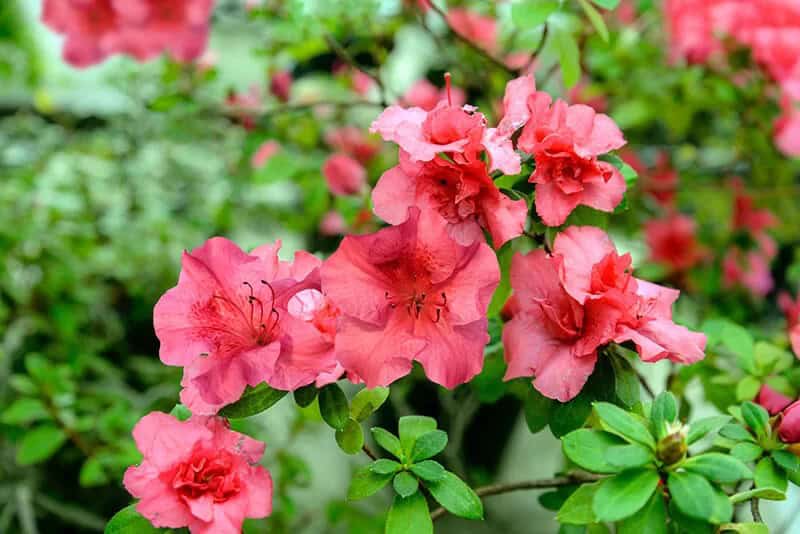
The Kyushu azalea, a symbol of fleeting beauty and evanescent passion, is no stranger to admiration. Its vibrant blooms and stunning appearance have earned it the distinction as the official flower of Nagasaki, Unzen, and Kagoshima Prefecture. As the parent of many popular azalea varieties, this plant offers enthusiasts the opportunity to experiment and develop their own unique cultivars.
In terms of its growing requirements, the Kyushu azalea thrives in medium-watered environments with porous, acidic, and well-draining soil. It is also well-suited for full-sun settings and blooms annually in May. With a growing zone of 7, this azalea is an attractive option for those living in temperate climates.
Ajisai Hydrangea (Hydrangea Macrophylla)
As you incorporate hydrangeas into your landscape, be prepared for an abundance of blooms that will keep you delighted throughout the summer months. The picturesque display in this image showcases a charming shade of pink, but with some simple adjustments to the soil, you can coax out beautiful blue blossoms as well. The large flower clusters are the perfect way to celebrate the bounteousness of the season.
To achieve this level of success, it’s essential to provide your hydrangeas with rich, well-draining soil and a pH factor that determines the color of the flowers. These plants thrive in part shade to full shade and can be grown in zones 5 to 11. Their blooming period typically occurs from July to August, making them an excellent choice for those looking to add some summer flair to their outdoor space.
Japanese Wisteria (Wisteria Floribunda ‘Multijuga’)
The Japanese Wisteria is a stunning flower that boasts violet cascades, making it a photographer’s dream come true. To grow this beauty, you’ll want to provide it with acidic, well-drained soil and full sun. The ideal growing zones for this plant are 4 to 9, so regardless of where you live in the United States, you should be able to find a suitable location. One thing to keep in mind is that Japanese Wisteria does require some maintenance, including regular pruning.
This will help keep your plant healthy and encourage it to produce plenty of blooms. If you’re looking for a showy flower that will cascade down a trellis or other support, then this is the perfect choice. Just be prepared to do some work to keep your plant happy.
Yuki-no-shita Strawberry Begonia (Saxifraga Stolonifera)
The symbolism of snow is deeply rooted in the beauty of the white strawberry begonia’s blooms. This flowering perennial thrives in conditions that are neither too demanding nor too lax – a delicate balance that is reflected in its growth habits. With a medium water requirement and light, well-draining soil, it’s no wonder this plant has found its place among zones 6 to 9.
The same carefree attitude is seen in its need for part shade to full shade, where it can bask in the gentle warmth of the sun. But what truly sets this begonia apart is its unique flowering season, which blooms majestically from May to June. A subtle yet striking asymmetry in the flower’s petals creates a visually stunning display, as if perfection itself has been deliberately disrupted.
The name ‘snow’ in Japanese only adds to the allure of these flowers, which tower above their geranium-like foliage with an air of quiet confidence. As strawberry begonias spread rapidly via runners, they make for an excellent groundcover, perfect for those shadowy corners of your garden that yearn for a touch of whimsy and charm.
27 Stunning Japanese Flowers to Plant to Achieve Inner Peace
Embrace your unique aesthetic when designing a Japanese-inspired landscape. Japan’s diverse environments, from serene mountain meadows to sun-kissed tropical beaches, offer endless opportunities for creativity and self-expression. Whether you’re crafting a comprehensive Japanese garden or simply seeking innovative ways to elevate your outdoor space, there are Japanese flowers that will harmonize with both your surroundings and personal style.
Some blooms may inspire you to venture out of your comfort zone and discover new loves, while others might be variations on familiar favorites. Regardless of the types of Japanese flowers you choose to cultivate, focus on achieving balance, finding beauty in imperfection, and cultivating self-awareness.
